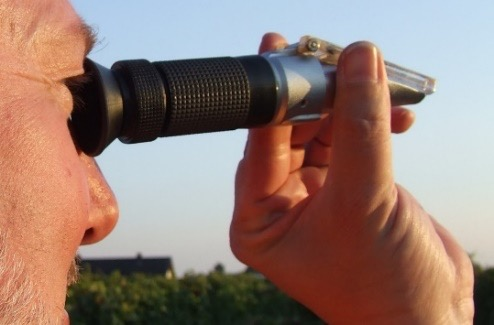Can Brix Predict Sugar Content of Forages? Dr. Kathy Soder, USDA-ARS Pasture Systems Watershed Management Research Unit, University Park, PA 16802
Full factsheet with figures and tables
What is Brix?¶
- Sugar content of fresh forages varies throughout the day.
- Farmers want to graze or harvest forages when sugars are highest.
- Brix has been used to measure the concentration of sugar (wine, fruit, honey industries), salt (aquariums), or immunoglobulin (colostrum).
- Brix measures dissolved solids in a liquid using a refractometer, not just sugars.
Some farmers use Brix as an on-farm method to predict sugar content of forages to make grazing decisions.
However, liquids extracted from forages may contain more than sugars, including oils, minerals, pectins, and proteins.

Can Brix be used as a reliable indicator of forage sugars?¶
Trials in alfalfa and orchardgrass found mixed results.
- In alfalfa, Brix was a fair (but not excellent) predictor of forage sugars in the spring (May-Jun) and in the late summer (Aug), but not in July when high Brix was observed when sugars were low.
- In orchardgrass, Brix was a very poor predictor of forage sugars, frequently predicting the opposite of what was measured or having no correlation (near zero).
- Brix results can be affected by many factors, including: time of year, drought/wet year, temperature, humidity, dew, human error
Take Home Message¶
- Brix refractometers may not be accurate enough to quantify sugars in forages, which are in much lower concentrations than in in other industries where Brix is used, such as fruits and honey.
- Farmers may want to consider more accurate methods of assessing energy content of forages in decision-making.